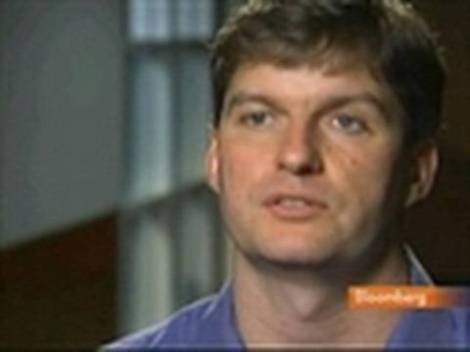Famous Traders
Posted: June 29, 2012 Filed under: Famous Traders, Videos | Tags: 2012, Famous Traders, Videos Leave a commentFamous Traders
watch video (25 min)
Michael Burry
Michael Burry (born 1971[1]) is founder of the Scion Capital LLC hedge fund, which he ran from 2000 until 2008, when he closed the fund to focus on his own personal investments. Burry was one of the first investors in the world to recognize and invest in the impending subprime mortgage crisis.[2] Author Michael Lewisprofiled him in his 2010 book The Big Short: Inside the Doomsday Machine, and he was featured in Gregory Zuckerman‘s 2009 book The Greatest Trade Ever: How John Paulson Bet Against The Markets and Made $20 Billion. Kip Oberting, of KVO Capital Management, has described Burry as “a risk-avoider”.[3]
Biography
Burry has described his “natural state” as an outsider who “just likes to find my own ideas”, saying, “no matter what group I’m in or where I am, I’ve always felt like I’m outside the group, and I’ve always been analyzing the group.”.[4] Burry graduated from Vanderbilt University School of Medicine[5] and did his residency in neurology atStanford Hospital.[2] While off duty at night, he worked on his life-long hobby, which was an interest in financial investments.[2] On one occasion, Burry had been working so hard, studying both for medical school and also his financial interests, that during a complicated surgery he fell asleep standing up, and crashed into the oxygen tent that had been built around the patient and was then thrown out of the operating room by the lead surgeon.[6] Like Ken Shubin Stein, he quit the medical profession in 2000 and started an investment company called Scion Capital, which would eventually make millions for investors initially by investing in undervalued stocks, and later betting heavily against subprime mortgages in advance of the 2008 financial crisis. Burry shut down the firm in 2008 due to personal and professional reasons, returning its capital to investors.[2] As of 2012 he was managing his own investments, which included almond farms in California, “a fancy way to essentially invest long-term in water.” Michael Lewis said, “they require a lot of water to grow and he’s got a very complicated argument about why these almond farms are a good idea, so I trust him.” [7]
Burry is married with children and lives in California.[2] He has been diagnosed with Asperger syndrome, as has his son.[8] [2]
Investment career
Burry left work as a Stanford Hospital neurology resident to become a full-time investor and start his own hedge fund. He had already developed a reputation as an investor by demonstrating astounding success in “value investing,” which he wrote about on a message board beginning in 1996. He was so successful with his stock picks that he attracted the interest of such companies as Vanguard, White Mountains Insurance Group and such prominent investors as Joel Greenblatt.
After shutting down his web site in November 2000, Burry started Scion Capital, funded by a small inheritance and loans from his family. The company was named after The Scions of Shannara, a favorite childhood book. Burry quickly earned extraordinary profits for his investors. According to Lewis, “in his first full year, 2001, theS&P 500 fell 11.88 percent. Scion was up 55 percent. The next year, the S&P 500 fell again, by 22.1 percent, and yet Scion was up again: 16 percent. The next year, 2003, the stock market finally turned around and rose 28.69 percent, but Mike Burry beat it again—his investments rose by 50 percent. By the end of 2004, Mike Burry was managing $600 million and turning money away.”[5]
In 2005, he veered from value investing to focus on the subprime market. Through his analysis of mortgage lending practices in 2003 and 2004, he correctly forecast abubble would collapse as early as 2007. Burry’s research on the runaway values of residential real estate convinced him that subprime mortgages, especially those with “teaser” rates, and the bonds based on these mortgages would begin losing value when the original rates reset, often in as little as two years after initiation. This conclusion led Burry to short the market by persuading Goldman Sachs to sell him credit default swaps against subprime deals he saw as vulnerable. This analysis proved correct, and Burry profited accordingly.[9][10][11] Ironically Burry’s since said, “I don’t go out looking for good shorts. I’m spending my time looking for good longs. I shorted mortgages because I had to. Every bit of logic I had led me to this trade and I had to do it”.[12]
Though he suffered an investor revolt before his predictions came true, he earned a personal profit of $100 million and a profit for his remaining investors of more than $700 million.[5] Scion Capital ultimately recorded returns of 489.34 percent (net of fees and expenses) between its November 1, 2000 inception and June 2008. The S&P 500 returned just over two percent over the same period.[5]
According to his website, he liquidated his credit default swap short positions by April 2008 and did not benefit from the taxpayer-funded bailouts of 2008 and 2009.[13]He subsequently liquidated his company to focus on his personal investment portfolio.[13]
In a April 3, 2010, op-ed for the New York Times, Burry argued that anyone who studied the financial markets carefully in 2003, 2004, and 2005 could have recognized the growing risk in the subprime markets.[14] He faulted federal regulators for failing to listen to warnings from outside a closed circle of advisors.[14]
In April 2011, he suggests: (1) Open a bank account in Canada, (2) there are opportunities in small cap stocks, and (3) blue chips may be less attractive than their price-earnings suggests.[15]


